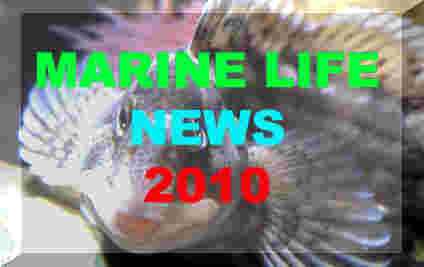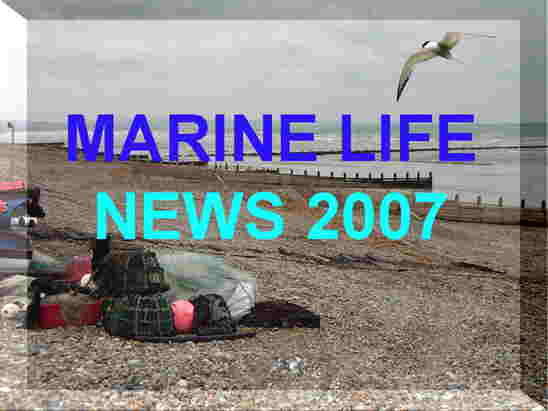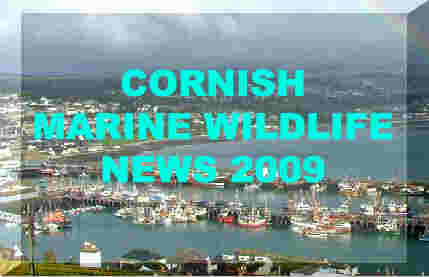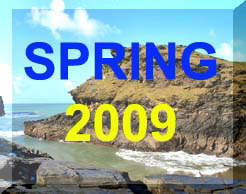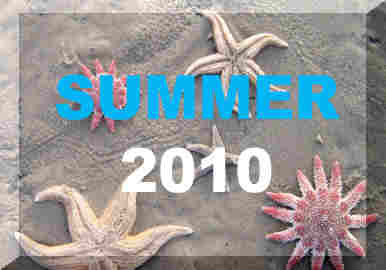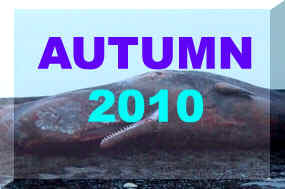LATEST
NEWS:
28
June 2010
Dean
Tapley was the first to spot a Sperm
Whale, Physeter macrocephalus,
off
the south coast of Devon in the morning in calm seas. He spent about half
an hour watching the whale and taking pictures before returning to shore
and reporting what he had seen to Paignton Harbourmaster.
"It
was the sound of the water coming out of the blowhole which will stay with
him. It was just so loud," said Dean Tapley.
The
Sperm Whale can be seen off the west coasts of Ireland and Scotland, usually
sighted alone. As they are a deep water species, they are usually only
observed from a boat. The large blunt head and forward angled spout make
the Sperm Whale
one of the easiest species to identify.
"It
has been known for these animals to occasionally enter the western English
Channel but very rare for the animal to travel as far east as this and
so close to shore."
BBC
News Report with a Movie Recording
Comments
by Steve Savage
and Gemma Veneruso (Sea
Watch Foundation)
BMLSS
Cetaceans
Whales
& Dolphins in British Seas
19
June 2010
Stuart
Exall and Casey Brehaut caught a
Cornish Blackfish, Schedophilus
medusophagus, in a gill net south of Lihou
Island, off the west coast of Guernsey,
in the Channel Islands. The fish weighed 641 grams with a total length
445 mm
plus
a fork length of 393 mm.
This
fish is a mesopelagic
species from temperate waters of the north-eastern and north-western Atlantic
and the western Mediterranean. It is the first
known record from the Channel Islands caught at a depth of under seven
metres.
Sustainable
Guernsey Report
Previous
Report & More Information
19
June 2010 onwards
Basking Sharks,
Cetorhinus
maximus, continue to be seen from the shore
off the Cornish coast.
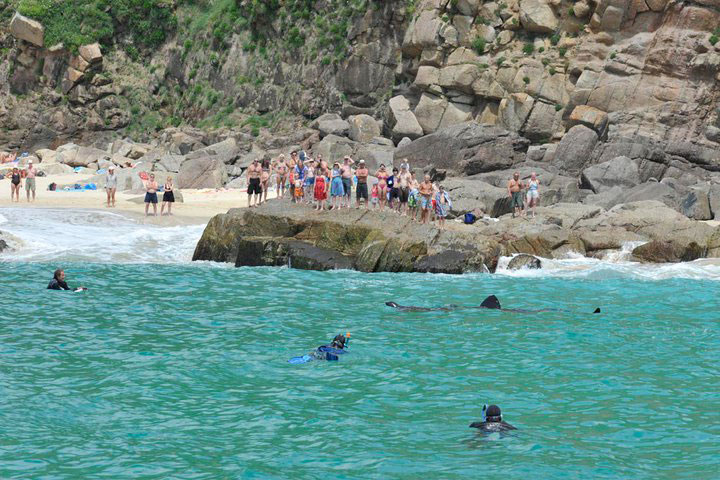
Porthchaple
Beach, Porthcurno, Cornwall
The
Basking
Sharks,
Cetorhinus maximus,
provide a special attraction
Photograph
by Charles
Hood
Basking
Shark Video on Facebook (by Maria Munn)
Basking
Sharks on flickr
BMLSS
Basking Sharks
BMLSS
Shark & Ray News
June
2009

A Tadpole
Fish, Raniceps raninus,
was spotted on a dive on the front side of Dawas Rock at Porthkerris,
Cornwall, at about 5 meters depth.
5
June 2010
Adur
World Oceans Day 2010
The
tenth Adur World Oceans Day went well in the
marquee on
Coronation
Green, by Shoreham
footbridge at the High Street end on the opening Saturday of the Adur
Festival. Len Nevell
of the British Marine Life Study Society was
there with the usual exhibition of lobsters and crabs.
"The
aim of the event is to introduce the young visitors to the world of the
sea
and seashore, an opportunity they may not get. It is an educational
event
with an opportunity for children to participate in the interactive
activities."
Quote
by Andy Horton (British Marine
Life Study Society)
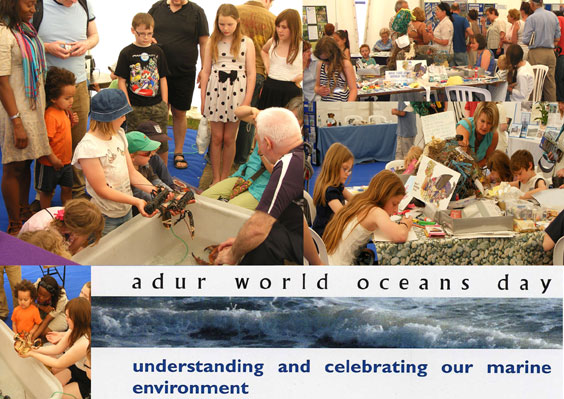
World
Oceans Day on Facebook
4 June
2010
A
Red
Scorpionfish,
Scorpaena
scrofa,
was caught inside Guernsey's 12 mile limit in a scallop dredge. This
warm water and Mediterranean fish is a rare visitor to the English Channel.
This
small fish has venomous
spines on its dorsal, ventral and anal fins. Each spine has a separate
venom gland at the base.
Two
Scorpaena
scrofa have been recorded from Irish
waters so far this year. Scorpaena
scrofa
and
Scorpaena
porcus
appear to be more frequently recorded over the last couple of decades than
heretofore. Eleven of these records date from 1994 and the earliest from
1884.
25
May 2010
Spiny
Seahorse, Hippocampus
guttulatus (=H. ramulosus)
Spiny
Seahorses were spotted in Studland Bay, Dorset.
Pregnant
Male Spiny Seahorse at Studland Bay on Facebook (by Neil Garrick-Maidment)
Seahorses
Photo Album on Facebook (by Neil Garrick-Maidment)
BMLSS
Seahorses
24
May 2010 onwards
Some
of the first Basking Sharks,
Cetorhinus maximus,
of the year are spotted off Land's End, Cornwall.
"I
heard a brief splash as three of the twelve sharks breached the surface"
.
Video
Film 2009 Link (by Dan Burton)
15
May 2010 onwards
Other
Basking
Shark reports from off the coast of Cornwall
came from Pendeen and Praa Sands and the odd one off the Lizard. Later
reports on 18 May 2010
saw the sharks off Porthcurno and Sennen.
BMLSS
Basking Sharks 1
BMLSS
Shark & Ray News
14
May 2010
Richard
Benyon, Conservative MP for Newbury, has
been appointed as the Parliamentary
Under-Secretary of State for the Natural
Environment and Fisheries at the Department
for Environment, Food and Rural Affairs.
1997
Appointments
9 May
2010
A
rarely recorded Oarfish
(or Ribbon Fish),
Regalecus
glesne, was found dead in the small
fishing village of Bovallstrand
on the west coast of Sweden, about 90 kilometers (56 miles) from the Norwegian
border. This strange elongated deep sea fish measured 3.5 metres. This
was a relatively small specimen of the longest fish found in the oceans.
The fish was taken to the House of the Sea Museum in Lysekil.
The last recorded discovery of an Oarfish
in
Sweden was in 1879.
Kurt
Ove Eriksson, who discovered the fish, initially
thought the leviathan
was "a big piece of plastic."
BMLSS
Oarfish
Previous
Report on the Northumberland coast 2009
BMLSS
Beachcombing
22
April 2010
A
large Box Crab,
Paramola
cuvieri, was caught 80 miles west
of the Isles of Scilly by skipper Matthew
Keast on his boat Harvest
Reaper while fishing for Turbot.
This
rare species of deep-sea crab, normally found at depths of down to three
kilometres
was landed at Newlyn.
It
was only the seventh recorded since records began in 1900.
Despite its long journey from the depths, the crab, which has a claw span
of more than a metre, appears in reasonable condition and is being looked
after in a specially chilled tank at the Blue
Reef Aquarium in Newquay.
Curator
Matt
Slater said: "It
looks like something from another planet and has caused quite a stir among
all the staff. It's one of the oddest crabs I've ever seen. It has
weird eyes on stalks which look like bicycle handlebars and a strange pair
of backward facing pincers. Apparently it's normally found very deep on
the edge of the continental shelf which runs from Morocco to Ireland at
depths of 3,000 metres," he explained. "Due
to the great depths at which they live relatively little is known about
giant Box Crabs, but it is thought they live mainly off dead fish they
find on the seabed."
Previous
Report in 2004
Paramola
cuvieri on flickr
Cornish
Mailing List
BMLSS
Crabs
19
April 2010
Recreational
angler Troy Waterman
discovered the third (and his second) British record of the alien Asian
Shore Crab, Hemigrapsus
sanguineus, on the southern end of
the west coast of Guernsey in the Channel Islands. It was a female and
alive. with a carapace width measured at 23 mm.
The
Asian
Shore Crab has a square-shaped shell with
three spines on each side of the carapace.
Hemigrapsus
sanguineus is indigenous to the western
Pacific Ocean from Russia, along the Korean and Chinese coasts to Hong
Kong, and the Japanese archipelago. This species is an opportunistic
omnivore, feeding on macroalgae, salt marsh grass, larval and juvenile
fish, and small invertebrates such as amphipods, molluscs,
Barnacles,
and polychaete worms. It is highly reproductive
with a breeding season from May to September. This versatile crab inhabits
any shallow hard-bottom intertidal or sometimes subtidal habitats. This
species has the potential to become an established competitor with native
crabs.
Previous
Record
Further
Information (by Richard Lord)
2
April 2010

A
Yarrell's
Blenny,
Chirolophis
ascanii, was discovered in a rockpool
near Banff
in north Scotland. "It has a fern like horn above its head which
looks bright yellow in daylight." This
is an unusual find on the shore and this is only the second report received.
Both were from north Scotland.

British
Marine Life News 2009
Cornish
Marine Life Records 2009 (Ray Dennis Records)
BMLSS
Oil Disasters page


